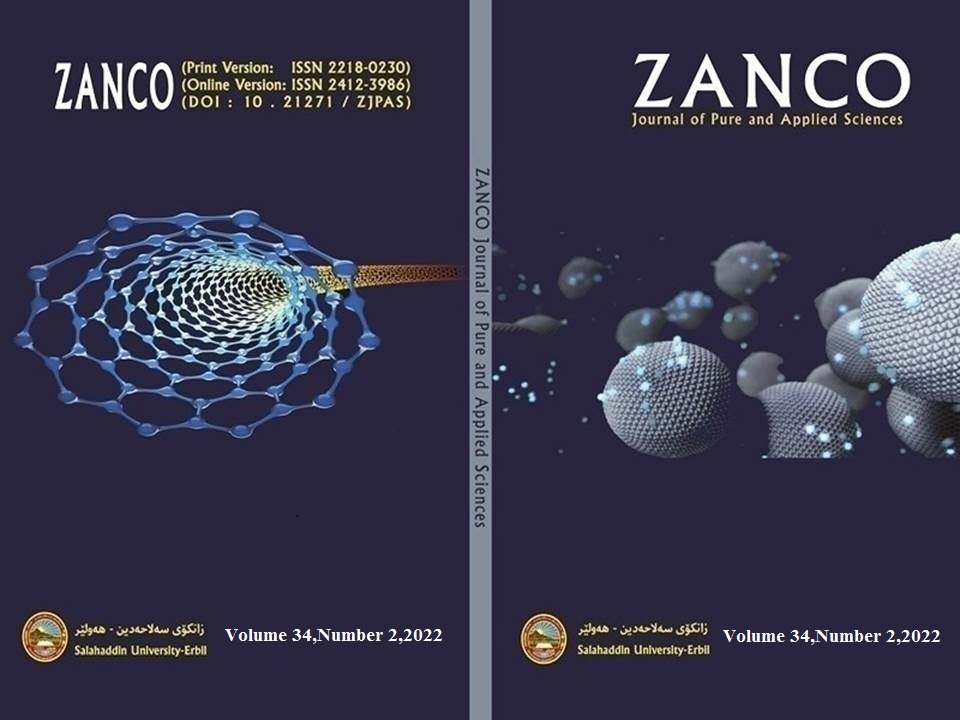Identifying and analyzing the effects of electric fields on erythrocyte sedimentation rate.
DOI:
https://doi.org/10.21271/ZJPAS.34.2.1Keywords:
Erythrocyte sedimentation rate, Electric field, Westergren, human blood exposure, blood aggregations.Abstract
Introduction: The influence of electric field on the nature of blood flow and cells is controversial. Erythrocytes sedimentation rate (ESR) examination is a recommended approach to diagnose a few health conditions such as polymyalgia rheumatic and temporal arteritis.
Aim: In this study, we aimed to evaluate the effect of electric field on ESR of human male and female blood samples.
Method: Healthy blood samples were exposed with electric field (in-vitro) with various exposure intensities. The Westergren method used to examine ESR in-vitro.
Results: An increase of ESR was shown in blood samples of both genders at low to high exposure intensities. Female blood samples got a higher ESR than that of male blood samples at low exposure filed. However, that trend turned to opposite at high exposure electric field. Compare to untreated blood samples, the largest rate of ERS variation, for male and female blood samples, were about 140% versus a 135% respectively due to 72 V/m of exposure.
Conclusion: Consequently, electric field produces an influence on the blood red cells sedimentation depending on the exposure intensity.
References
ALI, F. M., S. MOHAMED, W. & MOHAMED, M. R. 2003. Effect of 50 Hz, 0.2 mT magnetic fields on RBC properties and heart functions of albino rats. Bioelectromagnetics: Journal of the Bioelectromagnetics Society, The Society for Physical Regulation in Biology and Medicine, The European Bioelectromagnetics Association, 24, 535-545.
BASKURT, O. K. & MEISELMAN, H. J. 2013. Erythrocyte aggregation: basic aspects and clinical importance. Clinical hemorheology and microcirculation, 53, 23-37.
BRIGDEN, M. L. 1999. Clinical utility of the erythrocyte sedimentation rate. American family physician, 60, 1443-1450.
FERNANDES, H. P., CESAR, C. L. & BARJAS-CASTRO, M. D. L. 2011. Electrical properties of the red blood cell membrane and immunohematological investigation. Revista brasileira de hematologia e hemoterapia, 33, 297-301.
IINO, M. 1997. Effects of a homogeneous magnetic field on erythrocyte sedimentation and aggregation. Bioelectromagnetics: Journal of the Bioelectromagnetics Society, The Society for Physical Regulation in Biology and Medicine, The European Bioelectromagnetics Association, 18, 215-222.
JUUTILAINEN, J. & LAHTINEN, T. 1985. Effects of low frequency electric fields on the sedimentation rate of human blood. Preliminary observations. International journal of biometeorology, 29, 243-252.
KIZILOVA, N., BATYUK, L. & BARANETS, V. Human red blood cell properties and sedimentation rate: a biomechanical study. The International Conference of the Polish Society of Biomechanics, 2018. Springer, 3-22.
MUSTAFA, B. T., YABA, S. & ISMAIL, A. H. Impacts of In Vivo Exposure Static Magnetic Field to Blood Viscosity. Materials Science Forum, 2020a. Trans Tech Publ, 369-378.
MUSTAFA, B. T., YABA, S. P. & ISMAIL, A. H. 2020b. Influence of the static magnetic field on red blood cells parameters and platelets using tests of CBC and microscopy images. Biomedical Physics & Engineering Express, 6, 025004.
MUSTAFA, B. T., YABA, S. P. & ISMAIL, A. H. 2019. A review of the Effects of Magnetic Field on main blood cells: in vivo and in vitro experiments. ZANCO Journal of Pure and Applied Sciences, 31, 40-50.
SOX JR, H. C. & LIANG, M. H. 1986. The erythrocyte sedimentation rate. Guidelines for rational use. Annals of internal medicine, 104, 515-523.
VENNAPUSA, B., DE LA CRUZ, L., SHAH, H., MICHALSKI, V. & ZHANG, Q.-Y. 2011. Erythrocyte sedimentation rate (ESR) measured by the Streck ESR-Auto Plus is higher than with the Sediplast Westergren method: a validation study. American journal of clinical pathology, 135, 386-390.
YAMAGISHI, A. 1990. Biological systems in high magnetic field. Journal of magnetism and magnetic materials, 90, 43-46.
Downloads
Published
How to Cite
Issue
Section
License
Copyright (c) 2022 Khadija N. Abdulla, Asaad H. Ismail, Bestoon T. Mustafa, Saman M. Abdulkareem

This work is licensed under a Creative Commons Attribution 4.0 International License.














